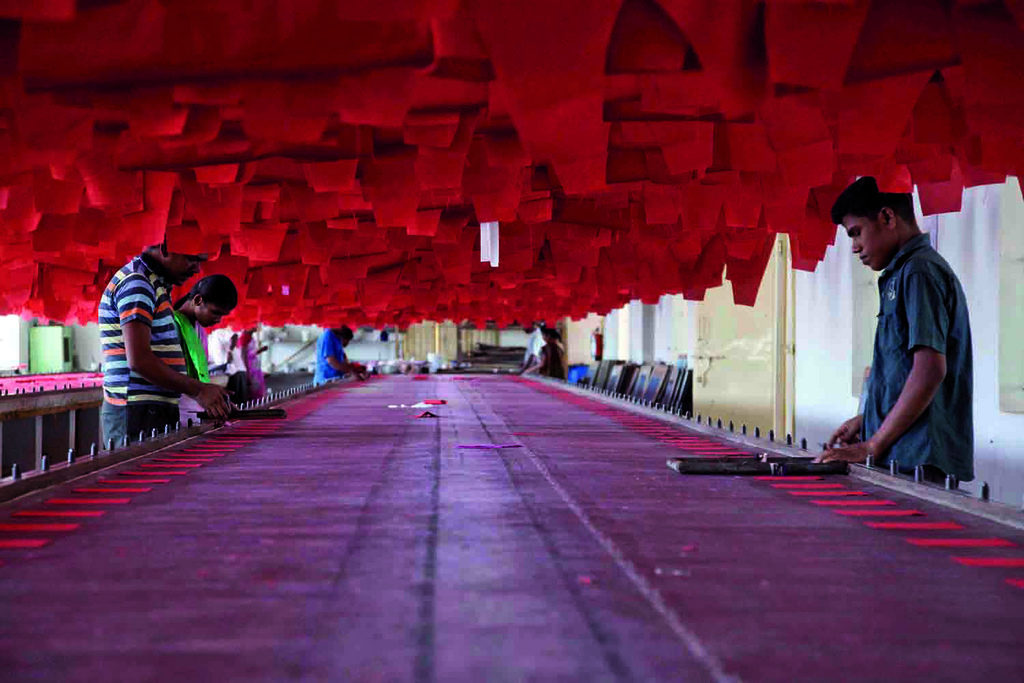Published in The Daily Star on November 26, 2017

Hit by a sharp decline in textile exports in the current fiscal year, India’s commerce and industry ministry has announced doubling an incentive under the Merchandise Export from India Scheme (MEIS) for garment exporters with immediate effect.
Now exporters of garments will get back 4 percent of their exports’ value, an increase of 2 percentage points, in the form of duty exemption scrips, which can be used to pay duties on inputs, including customs. A ministry statement on Friday said the enhancement was to support declining textile exports.
“The estimated annual incentives will be Rs 1,143.15 crore for 2017-18 and Rs 685.89 crore for 2018-19,” it said.
“This measure will incentivise the exports of labour-intensive sectors of readymade garments and made-ups and contribute to employment,” it added.
The sharp decline was not only in export of textiles but also in that of leather, gems and jewellery, handicrafts, readymade garments and carpets, among others.
India’s exports fell 1.12 percent in October this year to $23 billion with most of the traditional exporting sectors contributing to the fall.
Garment exports from India fell 39.2 percent in October to $829.4 million following the rollout of the goods and services tax (GST) on July 1, which is touted as a major economic reform of Prime Minister Narendra Modi’s government.
The GST subsumes a plethora of local taxes. The made-ups sector, which includes products such as towels and bedsheets, is the second-largest employer in the textile sector after apparel.
The Indian cabinet had last year approved a set of reforms including simplified labour laws and technology upgradation for the sector besides a Rs 6,000-crore package for employment generation and promotion of textile exports.
Federation of Indian Export Organisations’ President Ganesh Kumar Gupta asked Commerce Minister Suresh Prabhu to extend the MEIS incentive to other labour-intensive sectors.
“We need and expect much more relief because after GST, our incentives have declined,” said Sanjay Jain, chairman, Confederation of Indian Textile Industry.
In the pre-GST regime, cotton garments enjoyed a 12 percent incentive on duty drawback and rebate on certain state levies known as the Remission of State Levies (ROSL). But this has been slashed to 2 percent on duty drawback and 0.39 percent on ROSL.
Apart from GST, Indian textile exports have lost out to other developing and least developed countries like Bangladesh and Pakistan which enjoy special duty benefits on shipments to the European Union.
Commerce ministry sources said other export sectors too could be given more relief in the coming months as the ministry has roped in the NITI Aayog (formerly Planning Commission) to work on a relief package for exporters.
Commerce Minister Suresh Prabhu said, against the backdrop of the recent exports decline and exporters attributing it to GST-related problems, the government last month addressed several procedural and operational problems exporters were facing. However, the impact will take some time to be felt, he said.
 CPD RMG Study Stitching a better future for Bangladesh
CPD RMG Study Stitching a better future for Bangladesh



